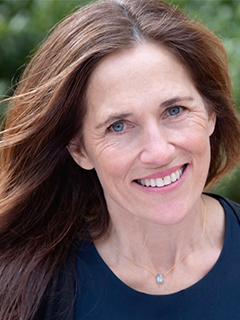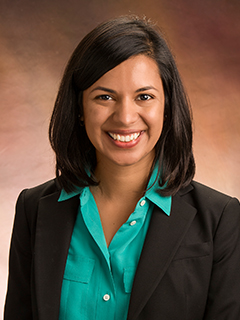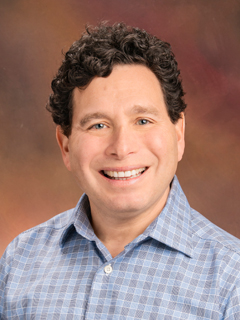HOW CAN WE HELP YOU? Call 1-800-TRY-CHOP
In This Section
Informing Novel Interventions for Gun Violence Prevention
By Kate Knab, Lauren Ingeno, and Emily Shafer
Editor’s Note: Where Discovery Leads is a multimedia storytelling project that delves into key research themes at Children’s Hospital of Philadelphia Research Institute. This is part one of a two-part series that focuses on the scientific studies aimed at addressing gun violence — and prevention. See part two of this series.
For the first time in decades, more children died from guns than from motor vehicle crashes, making firearms the number one cause of death for children in the United States in 2020. Seven children are killed and eight are injured by gunfire every day in America, and youth firearm suicide has reached its highest rate in more than 20 years, with most cases involving a family member’s unlocked weapon.
For Joel Fein, MD, MPH, an attending physician in the Emergency Department at Children’s Hospital of Philadelphia who conducts youth violence prevention research, the statistics are both staggering and, to some degree, inconsequential — one preventable pediatric injury or death is one too many.
“In reality, it does not matter if firearms are the first, second, or third leading cause of death, because it is all ridiculously tragic,” said Dr. Fein, who also co-directs CHOP’s Center for Violence Prevention with Stephen Leff, PhD. “It is incumbent upon CHOP, as a pediatric institution, to address the issue, in partnership with communities and community-based organizations.”
When it comes to preventing firearm injury and death, the home is one of the places CHOP researchers focus to help to inform effective interventions to keep children safe from unsecured firearms. They’re also using evidence-based research to demonstrate how exposure to gun violence negatively affects the mental health and well-being of our country’s youth. And they’re sharing knowledge about trauma-informed practices with community groups affected by gun violence.

Dorothy Novick, MD
As a pediatrician at CHOP’s South Philadelphia Primary Care practice for the past 24 years, Dorothy Novick, MD, has seen firsthand how violence can be a self-perpetuating cycle: A rise in community violence often leads to an uptick of guns inside of the home, which has been shown to significantly increase suicide and unintentional deaths of children and teens.
“The more worried you are about your safety, the more likely you are to purchase a gun and to keep it where you can easily access it for protection — your car, on top of the refrigerator, under your pillow,” Dr. Novick said.
A report from Everytown for Gun Safety shows there were 2,070 unintentional shootings by children in the United States between 2015 and 2020, and seven in 10 of those occurred inside of the home. Additionally, shootings by children are most often also shootings ofchildren: 91% of those victims were under age 18.
CHOP Research Sets Stage for Safety Counseling
CHOP’s Gun Safety Program offers a harm-reduction approach to gun safety that focuses on meeting patients and their caregivers where they are. The idea for the program began during a 2017 Center for Violence Prevention retreat involving CHOP clinicians, researchers, and staff.
The group collectively identified gun violence as a critical issue to focus their attention, and they decided to try gun safety counseling and safety device distribution as an intervention. Research shows that storing firearms securely plays a vital role in reducing unintentional shootings and gun suicides.
Sofia Chaudhary, MD, an emergency medicine physician in Atlanta, was an ED fellow at CHOP at the time of the retreat. She and Dr. Fein launched a qualitative study to assess the feasibility and acceptability of firearm safety counseling and distribution of safe storage devices in the ED at CHOP’s Philadelphia Campus.
During the course of the study, caregivers of patients visiting the ED completed a survey on firearm safe-storage knowledge and practices, and they received firearm-safety education. Among those with handguns, 17% reported not using a safety device, and 17% reported storing the gun loaded. The research team offered free cable locks and device education to those with firearm access — 47 individuals, 15% of all study participants, went home with one or more cable locks. A member of the study team contacted participants two weeks after the ED visit to assess firearm safety practices, cable lock use, and acceptability of the intervention.
“Our research found that parents and caretakers are usually appreciative and do not mind being asked about guns, at least in the Emergency Department and our Primary Care clinics,” Dr. Fein said. “We’ve also shown that if we do give education to parents and caretakers, we can increase the safe storage of guns in the homes where our young patients live and play.”
Trauma-informed, Harm-reduction Approach Key in Primary Care Settings
Today, caregivers in CHOP’s ED can receive gun safety education and locks through two entry points. Caregivers of patients with behavioral health issues — a teenager with suicidal ideation, for example, or an 8-year-old with aggression problems — are all given gun safety counseling. Caregivers and families are also offered counseling through phone calls from CHOP’s Family Connects Program, which connects patients and their families with social services.
“Members of the social work team in the ED, who do the majority of this work, were already asking these kinds of questions,” Dr. Fein said, “but they didn’t have a meaningful way to respond. That is exactly what the Gun Safety Program gives them.”
Encouraged by its success in the ED, as well as results from a 2008 landmark study showing the effectiveness of firearm safety counseling in primary care settings, Dr. Fein and Dr. Novick collaborated to bring the Gun Safety Program to CHOP’s Primary Care practices.
In the primary care setting, framing messaging about safe firearm storage and using a trauma-informed, harm-reduction approach is key, Dr. Novick said.
“We know the safest thing is not to have a firearm in your home, so, I’ll always start there,” Dr. Novick said. “If removal of firearms doesn’t seem like an acceptable option, then I’ll suggest minimizing the risk by storing all firearms securely, and I’ll offer a gun lock. Most people say, ‘Yes, that’s a great idea. I just didn’t know where to get one.’”
When the mother of one child told Dr. Novick that she could not lock up her gun because of a deep personal trauma, the pediatrician made a final plea that she at least keep the gun locked and secured during the day while her son was awake and playing in the house.
“The families I have worked with are scared for their own safety for reasons that are very real and present,” Dr. Novick said.
Even though the research is clear that having a firearm in the home for protection makes you less safe from firearm injury and death, Dr. Novick has empathy for the lived experiences of her patients and their caregivers.
“Emotionally, it is a very understandable instinct for people who feel that they’re under direct threat to feel safer with an unlocked gun,” she said.
She helps them make small changes that could have lifesaving impacts.
“As much as we know kids are safest when guns are inaccessible, locking your gun some of the time is better than never at all,” Dr. Novick said.
The Gun Safety Program has expanded to three primary care teaching practices at CHOP so far: South Philadelphia Care Network, Karabots Care Network, and Cobbs Creek Care Network. And thanks to a Chair’s Initiative grant awarded to Dr. Novick and colleagues this year, the team also will use the funding to rigorously evaluate and provide evidence about the feasibility and effectiveness of the program in different CHOP healthcare settings.
“Gun safety counseling is a simple intervention that has been shown to move the needle toward guns being stored securely and that we, as healthcare providers, can promote using our particular skills and relationships,” Dr. Novick said.
Exposure to Gun Violence Affects Mental Health
Beyond the physical harm, CHOP and University of Pennsylvania research shows proximity to gun violence and multiple exposures increase risk of pediatric mental health distress and having a mental health-related emergency department visit.

Aditi Vasan, MD, MSHP
“When we consider how violence affects children’s health, we often think first about children who are victims or survivors of shootings, and there is no question that is critically important,” said Aditi Vasan, MD, MSHP, attending physician in the Division of General Pediatrics at CHOP and a Research Scholar with the Center for Violence Prevention. “But I saw firsthand in my training here that many children are also secondary victims — they are affected by gun violence because they live in a neighborhood where shootings happen frequently, or they go to school with shooting victims and are affected by their absence in their classroom.”
In a study published in JAMA Pediatrics, Dr. Vasan and colleagues examined the association between neighborhood gun violence and pediatric emergency department-use related to mental health. They conducted a location-based cross-sectional study of children ages 0 to 19, living within a quarter-mile radius of a neighborhood shooting, who presented to the ED in the 60 days before or after a neighborhood shooting for a mental health-related complaint.
The researchers found that children exposed to gun violence in the prior 60 days were more likely to present with mental health symptoms, including depression, anxiety, and psychiatric emergencies. The association was distance- and time-dependent: Children who lived within one-eighth of a mile of a shooting were more likely to present with mental health distress, and the effect was strongest within the two weeks after the shooting.
A future research direction is to conduct a study using similar methodology to evaluate the impact of violence on mental health of children presenting in primary care.
“Emergency Department use is just the tip of the iceberg,” Dr. Vasan said. “There may be children whose symptoms do not get to that level of severity, but who still need mental healthcare and support because of gun violence exposure.”
Community-driven Research Provides a Voice
In summer 2021, bubbles, colored pencils, and bags of chocolate were assembled as researchers from the Center for Violence Prevention partnered with leadership at the Christian Street YMCA to co-create summer camp activities. Research Scientist Rachel Myers, PhD, MS, and Ronna Kassel, executive director of the Christian Street YMCA, were working to empower camp counselors to teach healthy coping strategies to children, some of whom may have experienced violence and trauma as part of their everyday lives, through engaging and playful activities.
The partnership between Dr. Myers and Kassel began in 2019 when they met at Community-Driven Research Day, an annual event that brings community leaders and academics together to discuss community organizations’ research priorities and foster community-academic partnerships to address these issues. Building coping strategies among Y counselors and campers was, and is, of high importance since many individuals have been affected by gun violence.
“The question the Y team was really interested in answering was, ‘What does it mean to our staff to be trauma-informed?’” Dr. Myers said. “How can we take knowledge about trauma-informed practices and infuse it into what people are already doing, especially as their staff and members were faced with increasing levels of community violence?”
Drawing an initial set of activities from the Center for Violence Prevention’s Building Resilience After Violent Experiences (BRAVE) peer support groups, Dr. Myers, Kassel, and the Y team, co-designed a set of activities that would be led by YMCA camp counselors. The counselors quickly recognized skills within this curriculum that they could use in their own lives to address emotion regulation, stress identification, and coping strategies, right alongside the campers. One camp leader noted a specific incident involving a stolen lunch that could have escalated into violence but did not, because he believed the children had learned better coping skills and perspective.
This initiative laid the groundwork for staff training on trauma-informed practices that Dr. Myers and Kassel hope to advance with their new community-engaged research pilot grant from CHOP PolicyLab’s Community Partnerships in Research Program. Many of the Y staff members live in the same community as the children and families they serve. By welcoming their stories and adapting interventions to meet the unique needs of their community, they hope to foster a safer place for everyone to work and play.
“We need the input of people who clearly remember what it is like to be a 13-year-old in the South Philadelphia Christian Street Y,” Kassel said. “That kind of community identity is very important to this work, and we want to engage the staff and counselors by involving them at every step.”
Gun violence and related trauma are not easy topics of conversation. Dr. Myers and her team encouraged direct feedback from counselors through surveys and honest conversations to ensure they were on the right track to develop sustainable strategies. The key areas of focus involved navigating relationships and conflict, understanding and normalizing their feelings, and building capacity to manage those feelings in healthy ways. Feedback from YMCA staff helped to refine the camp activities during summer 2022.
Community-driven research provides a voice to those who may not have been asked to give their input about topics they know well. Kassel expressed the incredible feeling of knowing that the voices of her staff and the children they serve are guiding future research initiatives so that the success they experience at the Christian Street YMCA can impact the community on an even larger scale.
Dr. Myers added, “Having a voice is thinking about how to use that voice to not only advance our own work, but also to lift up the work and expertise of the incredible community partners who are doing amazing and innovative things.”









